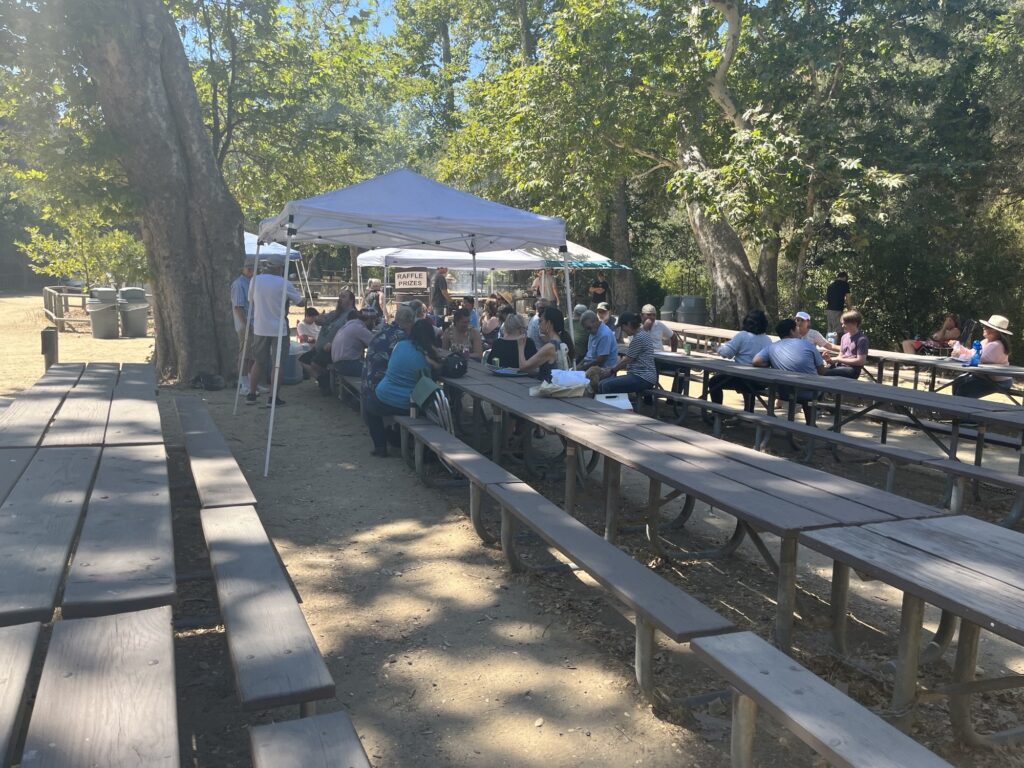The Chapter's Annual Summer BBQ was held Saturday Sept. 7 at Cuesta Park in SLO. Ken Fargen and crew once again prepared delicious grilled beef and chicken served with all the fixin's to chapter members, families, and friends along with this year's Trig*Star winners, their families and teachers. Trig*Star awards were presented and raffle prizes were rewarded to lucky ticket holders. Many THANK YOUs to the Fargen crew, Trig*Star Coordinator Luz Garcia, all those who generously donated the raffle prizes and a personal thank you to Matt Cunningham for pinch hitting for me in the ice/beverage/raffle drawing duties. And a special THANK YOU to Western Land Surveys, Inc for their cooling donation of the ice and beverages on that HOT 102° day !







